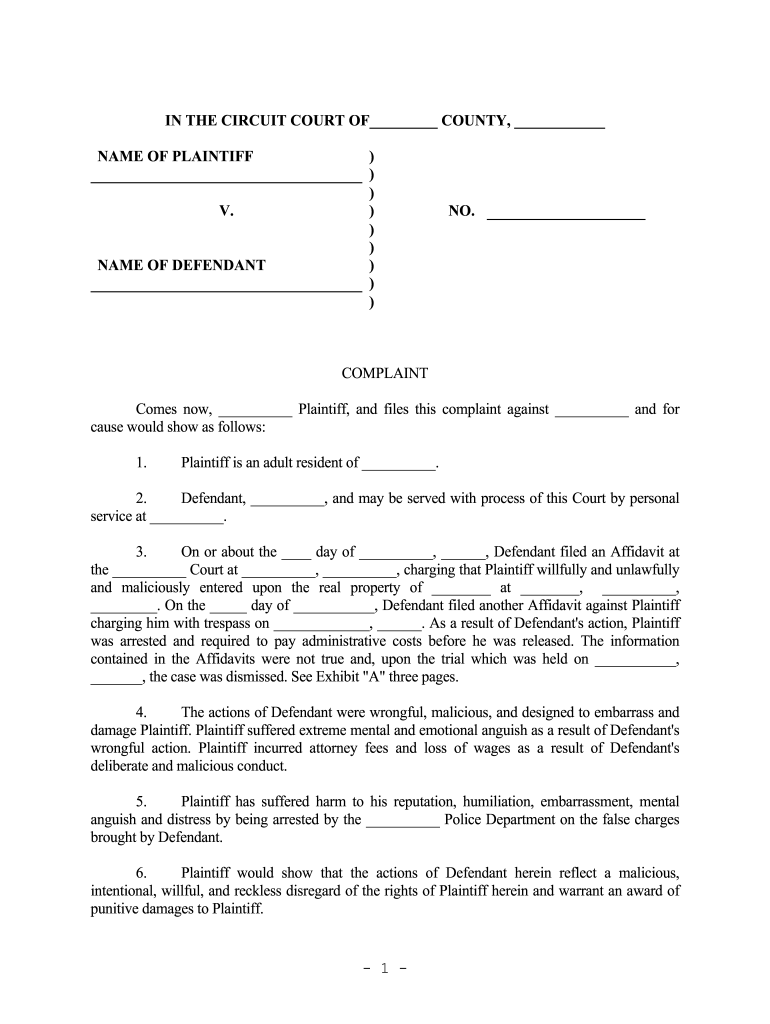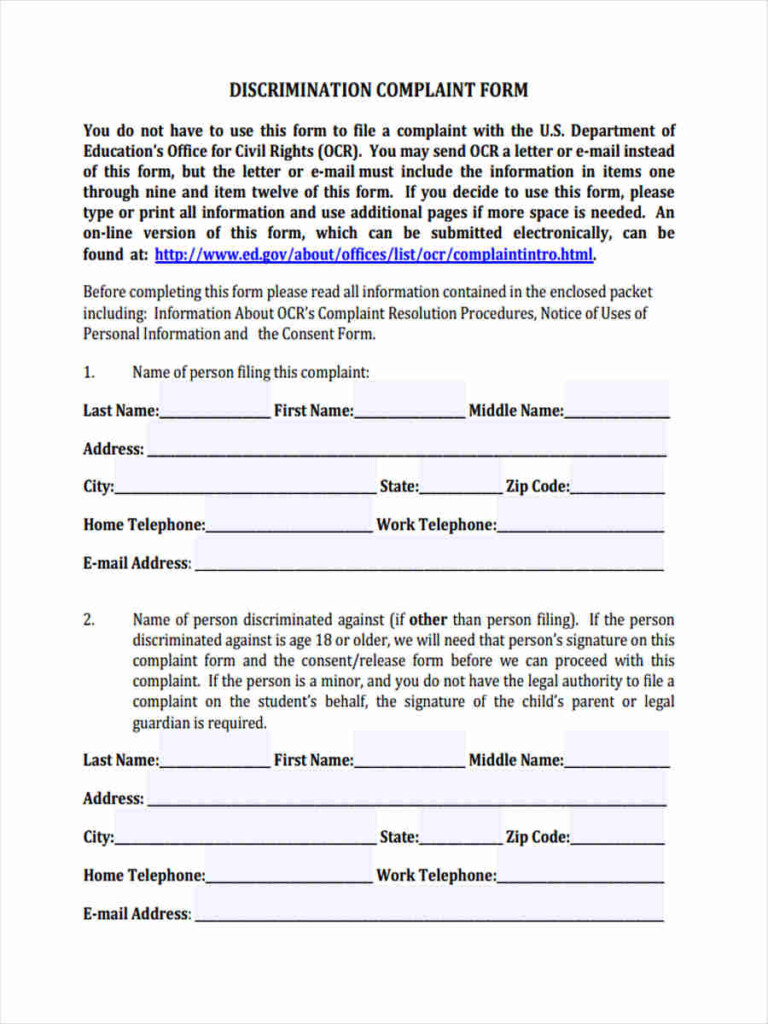Civil Complaint Forms For Federal Court – If you have been appointed to represent an individual in civil litigation, there may be several forms you must fill out. There are forms available on the court’s website that you can either print or download, or have them printed and sent in hard copies. Forms online are accessible, but you need to ensure that they’re appropriate for the case you are in before you submit any.
Fill in blanks on the form
The Supreme Court Administrative Office, (SCAO), has an extensive inventory of unfilled court form forms. They are arranged according to the nature and purpose of the legal issue. They can be searched by their number or name.
If you want to create a legal document, the first step is to identify an appropriate form to meet the situation. Certain forms include title of the case separate from the names of the parties through spaces.
Before you complete a form, be certain to go over the directions. In some instances you will be required to sign the form and may be required to indicate the manner in which the documents were delivered. Be sure to keep only single-sided copies. If you’re not doing this over and over again, you don’t have to duplicate it.
Request limited status in order to receive an electronic document
It can be difficult to obtain limited status for an electronic civil form. The factors to consider range from the legitimacy of the form to whether a certain requirements for format has been met. It is essential to ensure that you are adhering to the Minnesota Supreme Court regulations.
The general criterion for electronic filing is that the document needs to be legible and include an official stamp. Additionally, the document should be placed in an envelope properly and handed over to the clerk of the county. If the document is not in order, it will be checked to ensure its validity.
The EFCIV23 form is required to inform the parties that your electronic submission has been changed. In exceptional circumstances, you must also serve this form with your commencement paperwork.Additionally, you must use EDDS to submit the paperwork to the court.
Send the original copies of your exhibits.
Certain countries might require that you submit a physical copy of your exhibits to the court. However, your documentation is often submitted electronically. If a printed version of your electronic documents is required for courtroom use then you must provide it to the court.
As best as you can to your ability to the best of your ability, you must complete all court forms. Each field should be filled out completely and accurately. A lot of forms have blank spaces. If you have any questions about filling in an application, it’s an excellent idea to speak with an attorney.
Exhibits made of hardcopy should be made available to all parties with an associated document like the Notice of Exhibit Form Filling in Hard Copy. Web-based solutions like Odyssey File and Serve, or the EDDS mailing system can be used to serve.
Online forms might not suit your particular circumstance.
If you wish to use online court forms, it is necessary to first speak with a lawyer. This will enable you to consider your options and safeguard your rights. You are responsible for your own legal decisions in the event that you choose not to retain legal advice. You could face disciplinary action and civil fines in the event of not practicing law according to a license.
Many courts have self-help guides on their sites. But, some do not. For example the Alaska Court System has developed specific forms. One of these forms is the complaint, which is available here. There is a different form here, the interactive complaint form.
Once your form is finished you can print it and submit it to the court in which your case will be considered. You may also find other forms on the court’s website. However, certain forms require computer software. Computer programs are designed to collect information and ask questions. information. After that, they design forms.


